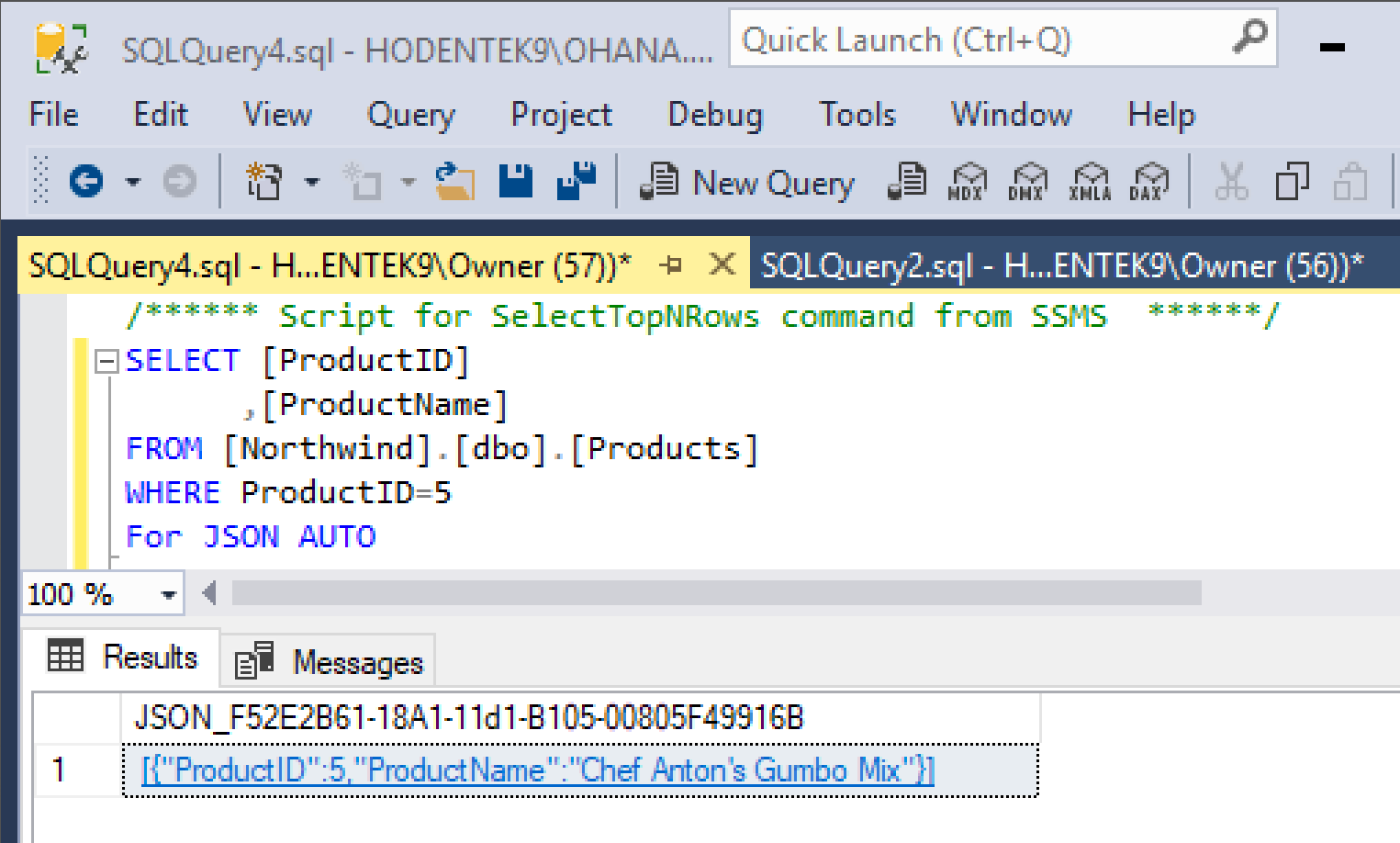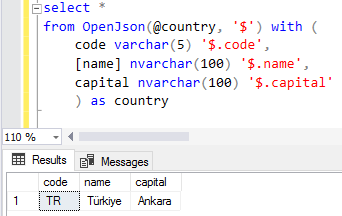

Casting the characters value AS JSON allows it to be passed into another OPENJSON. In the query, I have selected universe from the OPENJSON call on the Root object. Using the WITH operator, the query knows to select the value from the supplied key. The query selects fields from the superHero table and cross joins them with the ROOT objects. select heroID, universe, f.hero, f.alias, powers, g.hero as friendHero, g.alias as friendAlias from superHero s CROSS APPLY OPENJSON(s.description) WITH (universe varchar(10), characters nvarchar(max) as JSON) c CROSS apply OPENJSON(c.characters) WITH (hero varchar(20), alias varchar(20),powers nvarchar(max)as JSON, friends nvarchar(max)as JSON) f OUTER APPLY OPENJSON(f.friends) WITH(hero varchar(20), alias varchar(20)) g However, it was not until 2013 that its use became widespread when it was standardized by ECMA International as ECMA-404. Do the same thing for the friends object. SQL Server Reporting Services (SSRS) Introduction JSON (short for JavaScript Object Notation) was first introduced in the early 2000s as a lightweight format to exchange data between applications and servers. To flatten characters, use the WITH and include the keys within characters. select * from superHero s CROSS APPLY OPENJSON(s.description) WITH (universe varchar(10), characters nvarchar(max) as JSON) c CROSS apply OPENJSON(c.characters) Then add another CROSS APPLY OPENJSON to the query, opening the JSON. To open the nested characters level, in the WITH statement, cast the characters as JSON. Notice only one row returns and now has a universe column instead of a key column and a value column. Since I want to see the first position, my path is ‘$.characters’ select * from OPENJSON( (select description from superHero where heroID = 1), ' $.characters' ) So if I want to see the key value pairs within the character object, I need to pass the position into the path. Remember, JSON arrays use zero-based array indexing. To query the characters value directly, a JSON path can be passed into the OPENJSON function. It only opened the ROOT level, which contains universe and characters. That is because OPENJSON only opens one level at a time. Notice the key characters is paired with a value that still appears to be JSON. The type refers to the data type in the value column. JSONQUERY extracts an object or an array from a JSON string. JSONVALUE extracts a scalar value from a JSON string. ISJSON tests whether a string contains valid JSON. The built-in support for JSON includes the following built-in functions described briefly in this topic. When looking at the results, notice they are placed into key and value columns, along with a type column. Applies to: SQL Server 2016 (13.x) and later. Since the JSON is stored in the Description column, I passed a query to the OPENJSON function that returns the description for heroID 1. However, there is no specific JSON type, json data is usually just put in a. This means I’ll need to query the nested hierarchical JSON sub-arrays to flatten all the JSON data into a tabular format. From SQL Server 2016 and up you can use functions made to work with json data. In the hierarchy, notice friends is within characters and characters is within the ROOT object.

Notice the example JSON goes a few levels deep. REPLACE('SELECT ROW_NUMBER() OVER (ORDER BY ' + (SELECT T3.ColumnName FROM T3 WHERE T3.TableName = T1.TableName AND T3.' + '(' + CASE WHEN CONVERT(VARCHAR.) = -1 THEN 'MAX' ELSE CONVERT(VARCHAR.) END + ')' it into SQL Server using Invoke-SqlCmd or Invoke-DbaQuery. UPPER(.) = 'VARCHAR' OR UPPER(.) = 'NVARCHAR' THEN. Working solution to build JSON data out of SQL Server 2012 DECLARE NVARCHAR(50)


 0 kommentar(er)
0 kommentar(er)
